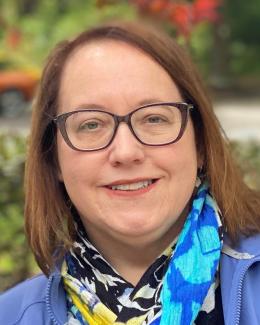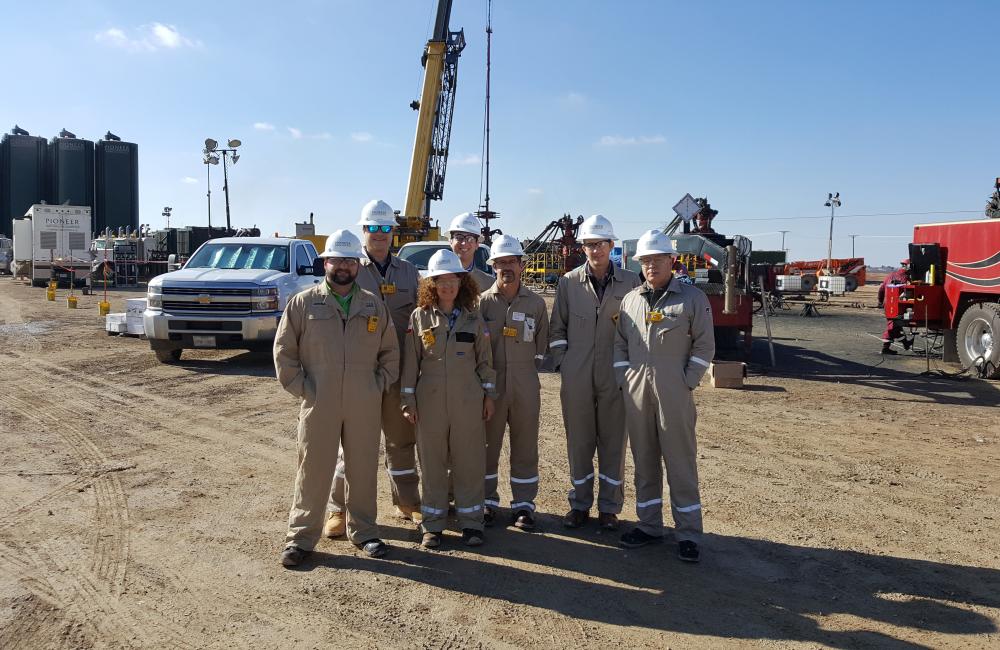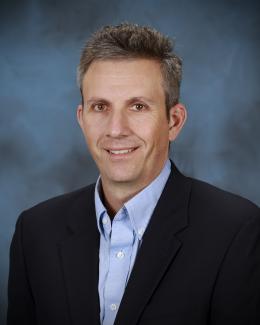Oak Ridge National Laboratory (ORNL) researchers in multiple disciplines recently paid a field visit to exploration and production company Pioneer Natural Resources as part of a new Technologist in Residence (TIR) program.
The partnership is focused on advanced materials and coatings, smart parts and sensors, advanced material design, and additive manufacturing, leveraging ORNL’s strong expertise and resources in advanced manufacturing.
The Department of Energy’s (DOE) Office of Energy Efficiency and Renewable Energy established the TIR program in 2015 as part of its Clean Energy Manufacturing Initiative to foster more high-impact collaborative research and development between the nation’s science laboratories and private industry. It has already resulted in several successful efforts, including a program between ORNL and Arconic Inc. (formerly Alcoa) that explores opportunities in advanced and additive manufacturing.
In the Pioneer project, researcher Yarom Polsky, leader of ORNL’s Sensors and Embedded Systems group, is directing a multilab effort to foster a better understanding of the energy firm’s needs and to identify what support the labs can offer.
Under the TIR, “we will have the ability to dive deeply into the details of the company’s operational issues and identify potential areas where our R&D can be helpful,” Polsky said. Some of the areas that may be explored include oil and gas resource characterization, field operations, logistics, environmental stewardship, materials wear and corrosion, and safety and health.
Pioneer, based in Irving, Texas, holds $15.2 billion in assets and some 10,000 oil- and gas-producing wells. Its vertically integrated operation means the company owns service equipment and provides many specialized services for drilling in-house rather than relying heavily on outside firms.
One of the first activities in the program was a field experience for ORNL researchers at Pioneer’s operations in Midland, Texas, in January 2017. Polsky arranged for a visit by a team of ORNL researchers with expertise in materials, chemical engineering, corrosion science, sensors, and computing.
“We wanted these subject matter experts to get a look at unconventional oil and gas production from end to end: the exploration and planning process, drilling, completing, fracking, and producing a well. This experience gave us the opportunity to not just think about issues in a theoretical sense, but to develop a more meaningful understanding of what actually happens in practice,” Polsky noted.
SubTER research boosts program
Polsky’s background lends itself well to the endeavor. He spent 7 years developing equipment at oilfield services firm Schlumberger. At ORNL, he is also manager of the Geothermal Technologies Program, which has conducted research as part of DOE’s Subsurface Technology and Engineering Research, Development, and Demonstration (SubTER) program. SubTER aims to leverage work under several DOE programs to improve understanding of the subsurface environment.
The work ranges from wellbore integrity technology, or how best to ensure that a well will not leak, to advanced characterization and manipulation of the subsurface for applications such as geothermal energy, underground carbon sequestration, or deep borehole storage of nuclear waste.
In the Electrical and Electronics Systems Research Division at ORNL where Polsky and his colleagues work, SubTER research has developed novel wellbore state of health monitoring sensors as well as algorithms to enhance downhole ultrasonic imaging to allow for better visualization of wellbores and, potentially, natural fractures miles underground.
“Eighty percent of our energy comes from the subsurface. Even with renewables and other clean energy, it is still the dominant share of our energy resources today,” Polsky noted. “We still know relatively little about the subsurface. It’s a complicated system that is not easily accessed. It’s often 3–4 miles below your feet and accessed by a hole that’s maybe 5 inches in diameter. Addressing these questions around the subsurface is one of the grand challenges of science.”
In the Pioneer project, Polsky sees potential for progress in these areas, although any actual research performed for the company would be subject to a separate agreement.
“For example, we have many people here who specialize in data analytics approaches that could provide a better understanding of geophysical datasets,” he noted. The collaboration could also yield positive economic impacts in areas such as improved drilling efficiencies, water resource conservation, and other issues as the labs bring their capabilities to bear to benefit industry.
ORNL is managed by UT-Battelle for DOE’s Office of Science, the single largest supporter of basic research in the physical sciences in the United States. DOE’s Office of Science is working to address some of the most pressing challenges of our time. For more information, please visit energy.gov/science.




